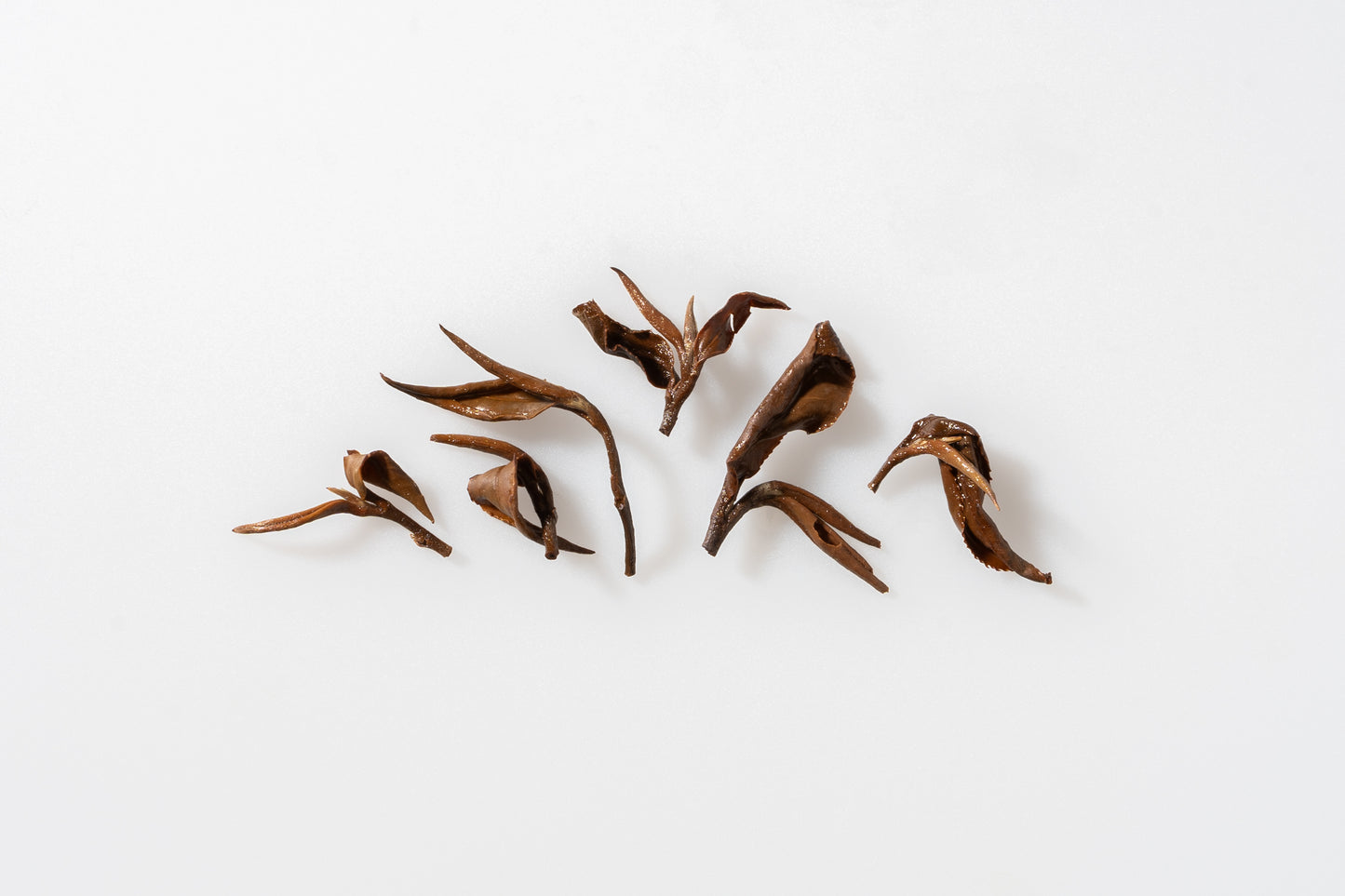teafriend
Oriental Beauty
Oriental Beauty
Oriental Beauty has a distinctive appearance, with alternating colors of white, green, yellow, red, and brown, resembling a flower. High-quality Oriental Beauty Tea may also have white tips, and the tea liquor has a beautiful yellow color. The tea has a natural honey-like or fruit-like aroma, with a smooth, rounded, and rich flavor.
Couldn't load pickup availability
Share



-
Tea Identity
Origin: Xin Zhu, Taiwan
Cultivar: Qing Xin Da Mou
Harvest: Winter,November,2023
Partial-Oxidation Level: Medium
Roast Level: Light
Farming Method: Eco-friendly
-
How to Store Properly
Store tea in airtight containers such as ceramic, glass, or tin with tight lid. Avoid using plastic containers. Store it in a cool, dark, dry place and keep it away from moisture.
Tea Shelf Life: 24 months after opening
-
Brewing Suggestion
Tea amount: 2 g
Brewing times: 6 times
Gong Fu: 85℃, 150ml, 50/25/50 sec
-
More about Oriental Beauty
Oriental Beauty Tea is a type of oolong tea that has many other names, such as 'White Tip Oolong Tea', 'Pengfeng Tea', 'Five-Colored Tea', and 'Champagne Oolong Tea'. Its origin may date back to the Japanese colonial era in the Hakka villages of Taiwan. Oriental Beauty Tea is also a unique and indigenous Taiwanese tea variety.
We only produce high-quality Oriental Beauty Tea using the best variety of Qing Xin Daxun tea leaves. The tea leaves require a special processing method, which involves selecting young, tender tea buds that have been bitten by the tea green leafhopper (a type of insect). After harvesting the tea leaves, we use natural sunlight to wither them, followed by indoor withering. During this process, we thoroughly stir the tea leaves to ensure uniform moisture loss and then oxidation. The purpose of this step is to make the tea leaves develop their unique flavor, aroma, and color. This step not only determines the degree of oxidation in partially oxidized tea but also affects the quality of the tea. Therefore, we carefully control this step to preserve the tea leaves' natural honey-like aroma and delicate floral and fruity notes, ensuring a smooth and refined flavor.



